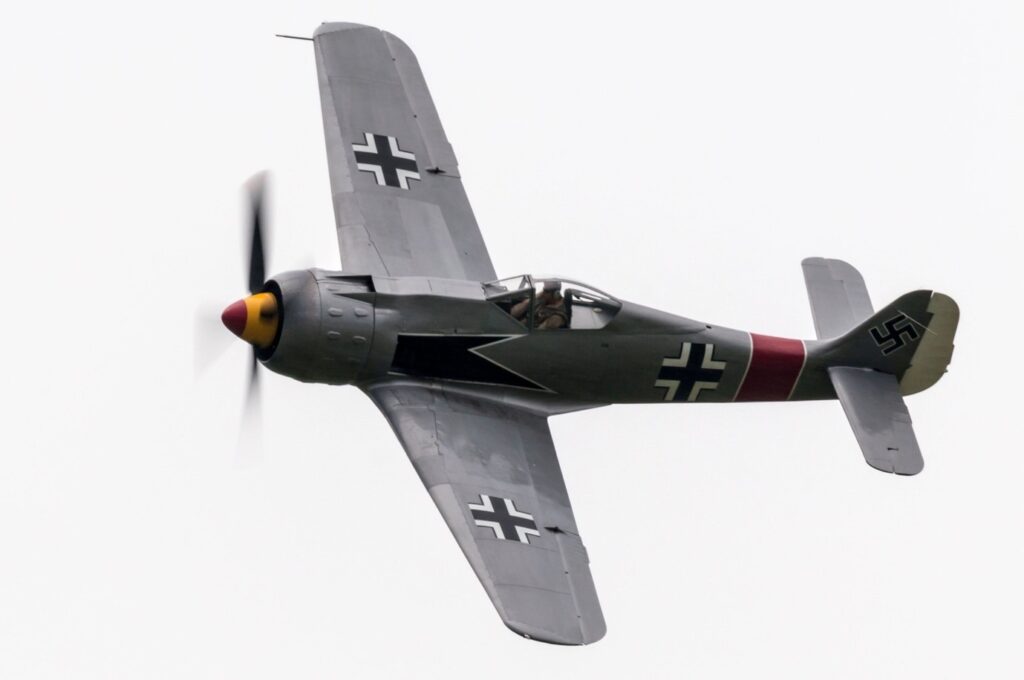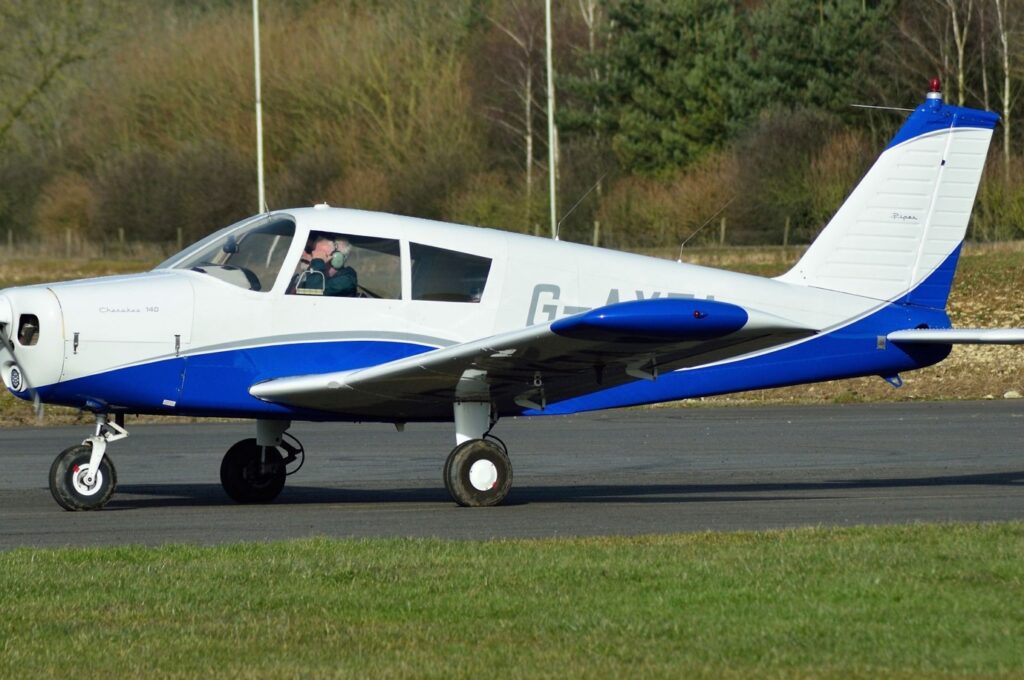Embarking on a journey through aviation history, we take a thrilling voyage through the skies, counting down the Top 10 most produced aircraft. From remarkable biplanes to the cutting-edge fighters that defined World War II (WW2), our countdown details the legends that have graced the heavens.
Join us as we soar through time, starting at 10th place and ascending towards the pinnacle of flight achievement – the most produced aircraft of all time. But before we start going up our list let’s look at the other two most produced narrow-body airliners.
Honorable mentions: Boeing 737 and Airbus A320
Most produced commercial airliner: Boeing 737
The Boeing 737 is a widely recognized commercial airliner that first took flight in 1967. Created by the American aerospace company Boeing, the 737 series has seen remarkable success, with over 11,660 units produced to date. It is celebrated for its versatility, reliability, and widespread use in the aviation industry, making it the most produced commercial airliner in history.

Revolutionizing commercial aviation: Airbus A320
The Airbus A320 is another prominent commercial airliner. Developed by the European aerospace manufacturer Airbus, the A320 series has achieved significant production numbers, with over 11,263 units manufactured. It is celebrated for its advanced technology, fuel efficiency, and contribution to modernizing air travel, establishing itself as one of the most produced commercial airliners in aviation history.

Now, let’s begin our countdown of the Top 10 most produced aircraft in aviation history.
10. Polikarpov Po-2: biplane brilliance
Our countdown commences with the Polikarpov Po-2, the most produced biplane ever. With a production range between 20,000 to 30,000 units, this Soviet multirole soared through the skies from 1928 to 1952.
It found extensive utility in training, liaison, reconnaissance and ground-attack missions. It was also used in Poland as well. While production ceased in the Soviet Union by 1953, licensed CSS-13s variant continued to roll off Polish assembly lines until 1959.

9. Focke-Wulf Fw 190: a fighter’s legacy
In the ninth spot is the Focke-Wulf Fw 190, German single-seat fighter aircraft. With a production count of 20,051 units, this fighter aircraft left a significant impact on aerial combat during WW2. Its operation span from 1939 to 1945, even witnessing a post-war chapter with 64 units produced in France as the ‘NC 900’.
One of the Fw 190’s most striking features was its innovative radial engine, which contributed to the aircraft’s distinctive and menacing appearance. This distinctive design, combined with aerodynamics, gave the Fw 190 a competitive edge in combat situations, allowing it to outmaneuver and outperform many of its adversaries.

8. Piper J-3 Cub: a fabric-covered wonder
Flying into eighth place is the Piper J-3 Cub which today stands as a true embodiment of a vintage aviation. With 20,191 units produced, this fabric-covered welded steel frame fuselage monoplane graced the skies from 1938 to 1947, produced mainly in the United States (US) with 150 units being crafted on Canadian soil. Interestingly, variants, such as the L-4, O-59, TG-8, and NE, expanded their capabilities beyond civilian aviation.

7. Supermarine Spitfire/Seafire: British aviation legend
Our countdown reaches the seventh spot, presenting the legendary Supermarine Spitfire/Seafire. With a production count of 22,685, this British fighter aircraft was one of the planes manufactured continuously throughout the war. Active from 1938 to 1948, its agility and design were instrumental in shaping the aerial theater of WW2.
Notably, its Seafire variants introduced carrier-based operations through the introduction of tailhooks. By doing so and adapting to carrier-based operations, the Seafire expanded the aircraft’s reach and demonstrated its adaptability in maritime contexts.

6. Cessna 182: utility beyond bounds
Claiming sixth place here is the Cessna 182, a utility aircraft that transcended expectations. With production around 24,000 units and climbing, this versatile aircraft, active since 1956, has found admirers worldwide. Cessna 182s are manufactured in Kansas, US, by Reims Aviation.
What truly sets the Cessna 182 apart is its exceptional versatility. Designed with adaptability in mind, it has proven itself time and again in a multitude of roles, ranging from personal and business travel to aerial surveying, law enforcement and even skydiving operations.

5. Cessna 150 / 152: two-seater excellence
Flying high in fifth place, the Cessna 150 / 152 secures its position with a production count of over 31,000 units between 1958 and 1986. A true marvel, it’s civil aviation’s most produced two-seat aircraft in terms of production volume.
Interestingly, it has also earned a reputation as one of the most popular aircraft for flight training. Its straightforward handling characteristics, stability, and forgiving flight envelope have made it a preferred choice for flight schools around the world.

4. Piper PA-28 Cherokee: elevating utility and training
In the fourth spot, the Piper PA-28 series, a testament to utility and training. With a production tally exceeding 32,778 units, this versatile aircraft family has been active since 1960.
As with the aforementioned Cessna 150 / 152, the PA-28 Series is enduringly popular among flight schools and training institutions. The PA-28’s cockpit ergonomics and user-friendly avionics contribute to an optimal learning environment, making it an ideal aircraft for introducing newcomers to the complexities of flight.

3. Messerschmitt Bf 109: a fighter’s legacy
Third place is claimed by the Messerschmitt Bf 109, a fighter legend that has earned its stripes in history. With a production count of 34,852 units, this German aircraft took to the skies between 1936 and 1958, playing a pivotal role in WW2 as the backbone of the German Luftwaffe’s fighter force. It saw action in numerous theaters, including the Battle of Britain, the Eastern Front, North Africa and the Mediterranean.
It is also the fighter aircraft with the highest production count and a single-seat cockpit configuration. Its influence extended across borders, with production taking place in various nations, including Romania, Spain, Hungary, Switzerland, and Czechoslovakia, now the Czech Republic and Slovakia.

2. Ilyushin Il-2: the ground-attack aircraft
Approaching the zenith of our countdown, the Ilyushin Il-2 Sturmovik, a ground-attack aircraft. With a staggering production figure of 36,183 units, this Soviet plane earned the accolades of being the most produced combat aircraft, most produced low-wing aircraft, and the most produced aircraft of WW2.
One of the most distinctive features of the Il-2 Sturmovik was its armor protection. Designed to withstand enemy fire, the aircraft’s pilot and vital components were heavily armored, giving it exceptional survivability in the hazardous environment of ground attack missions. This focus on protection contributed to Il-2’s reputation for being a ‘flying tank’.

1. Cessna 172 Skyhawk: the ultimate flight companion
Right at the top of our countdown stands the Cessna 172 Skyhawk. With a record-breaking production count exceeding 44,000 units and climbing, this aircraft reigns as the most produced commercial aircraft in history. From 1956 to the present, its rich legacy reflects its unwavering popularity and status as the ultimate flight companion for generations of aviators.
The Cessna 172 holds the world record for the longest continuous flight without landing for a single-engine aircraft. The record flight, lasted over 64 days, 22 hours, 19 minutes, and 5 seconds. This remarkable achievement, conducted by Robert Timm and John Cook in 1958, serves to highlight the aircraft’s endurance and reliability.
To sum up
As we conclude our flight through aviation history, we note that the Top 10 most produced aircraft have demonstrated their enduring impact and significance. From biplanes to fighters, each aircraft on this list has left an indelible mark, shaping the course of aviation. Through these remarkable machines, we celebrate the ingenuity, dedication, and determination that have propelled humanity’s journey through the heavens.

